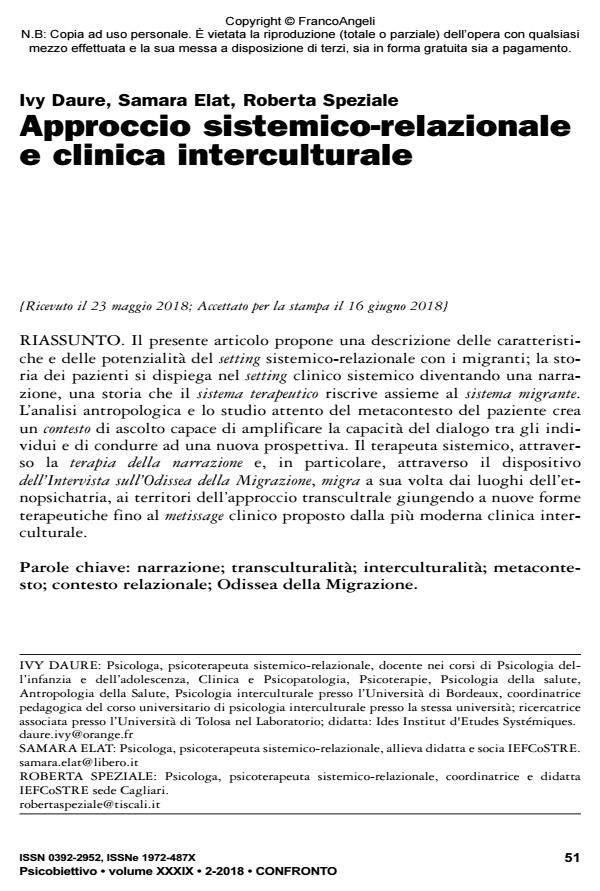Approccio sistemico-relazionale e clinica interculturale
Titolo Rivista PSICOBIETTIVO
Autori/Curatori Ivy Daure, Samara Elat, Roberta Speziale
Anno di pubblicazione 2018 Fascicolo 2018/2
Lingua Italiano Numero pagine 18 P. 51-68 Dimensione file 129 KB
DOI 10.3280/PSOB2018-002004
Il DOI è il codice a barre della proprietà intellettuale: per saperne di più
clicca qui
Qui sotto puoi vedere in anteprima la prima pagina di questo articolo.
Se questo articolo ti interessa, lo puoi acquistare (e scaricare in formato pdf) seguendo le facili indicazioni per acquistare il download credit. Acquista Download Credits per scaricare questo Articolo in formato PDF

FrancoAngeli è membro della Publishers International Linking Association, Inc (PILA)associazione indipendente e non profit per facilitare (attraverso i servizi tecnologici implementati da CrossRef.org) l’accesso degli studiosi ai contenuti digitali nelle pubblicazioni professionali e scientifiche
Il presente articolo propone una descrizione delle caratteristiche e delle potenzialità del setting sistemico-relazionale con i migranti; la storia dei pazienti si dispiega nel setting clinico sistemico diventando una narrazione, una storia che il sistema terapeutico riscrive assieme al sistema migrante. L’analisi antropologica e lo studio attento del metacontesto del paziente crea un contesto di ascolto capace di amplificare la capacità del dialogo tra gli individui e di condurre ad una nuova prospettiva. Il terapeuta sistemico, attraverso la terapia della narrazione e, in particolare, attraverso il dispositivo dell’Intervista sull’Odissea della Migrazione, migra a sua volta dai luoghi dell’et- nopsichatria, ai territori dell’approccio transcultrale giungendo a nuove forme terapeutiche fino al metissage clinico proposto dalla più moderna clinica interculturale.
Parole chiave:Narrazione; transculturalità; interculturalità; metaconte- sto; contesto relazionale; Odissea della Migrazione.
Ivy Daure, Samara Elat, Roberta Speziale, Approccio sistemico-relazionale e clinica interculturale in "PSICOBIETTIVO" 2/2018, pp 51-68, DOI: 10.3280/PSOB2018-002004